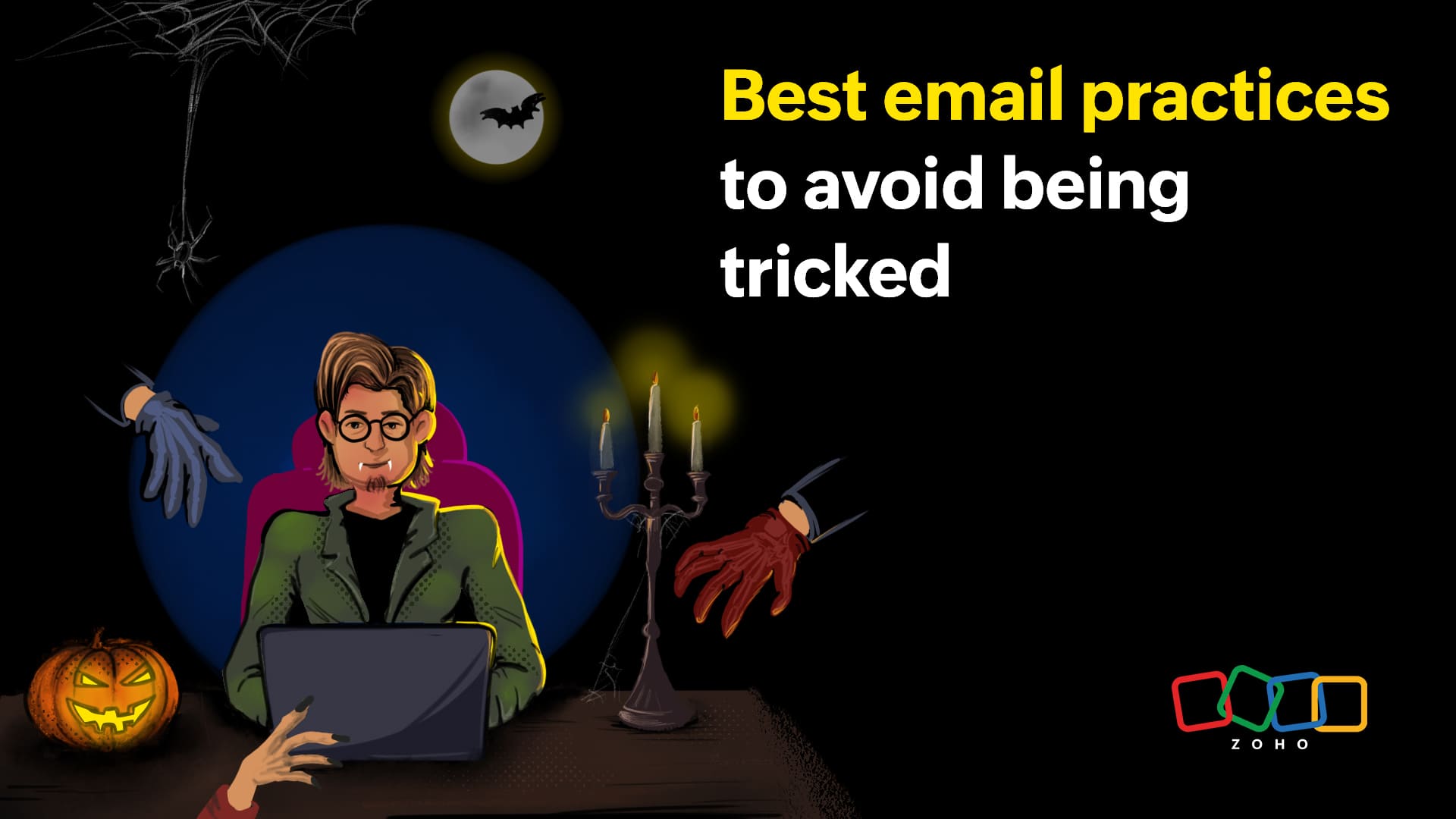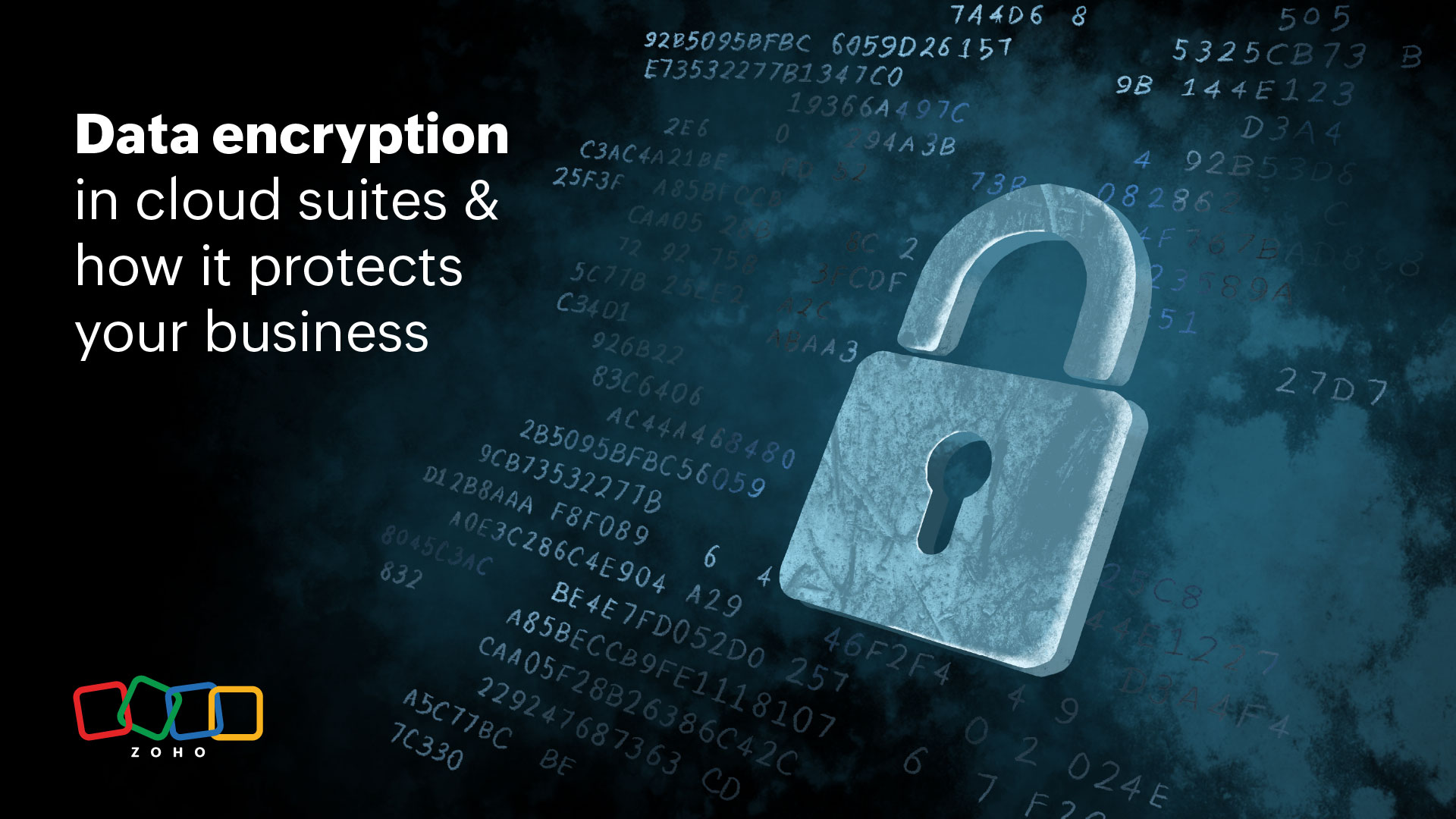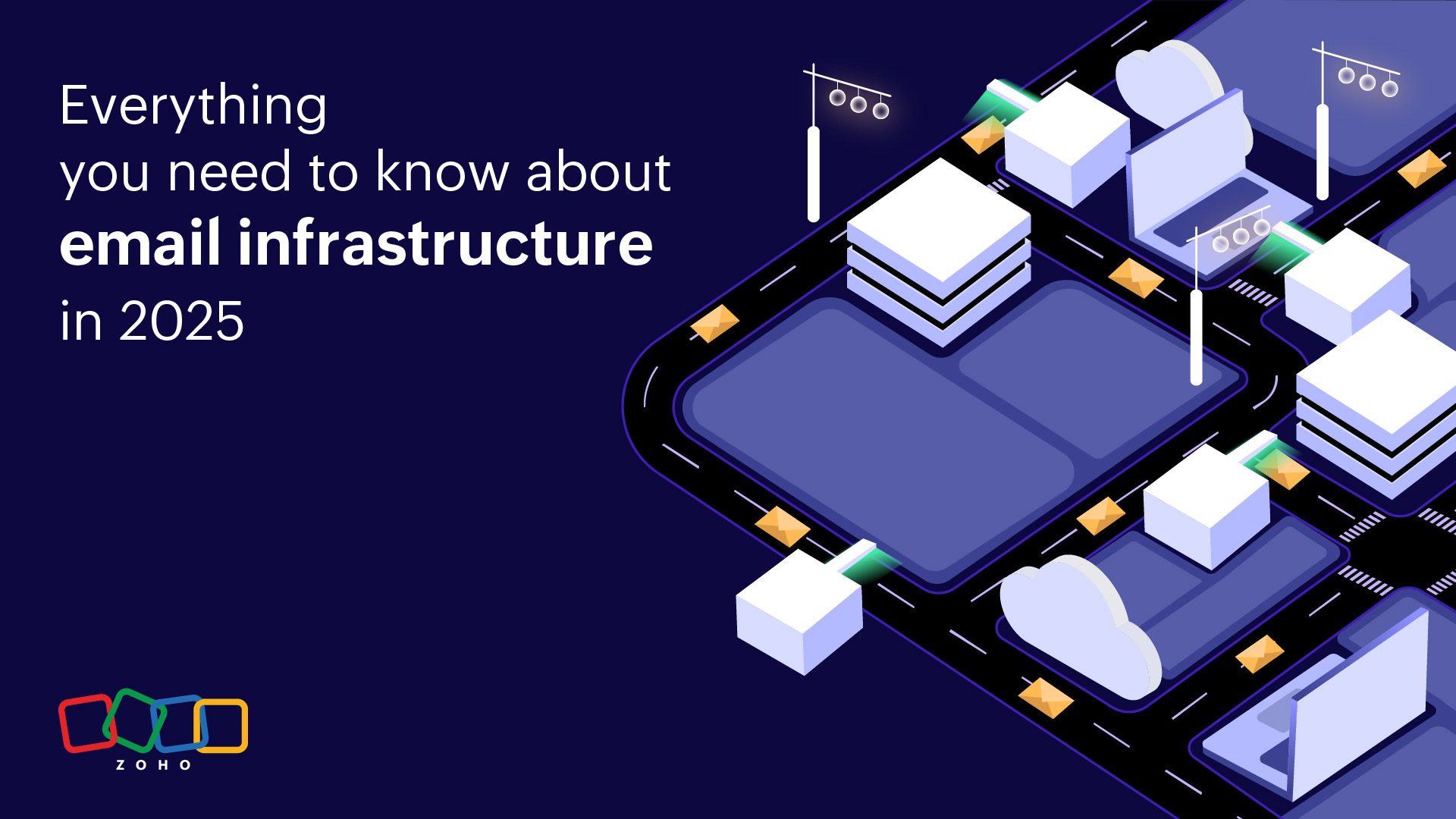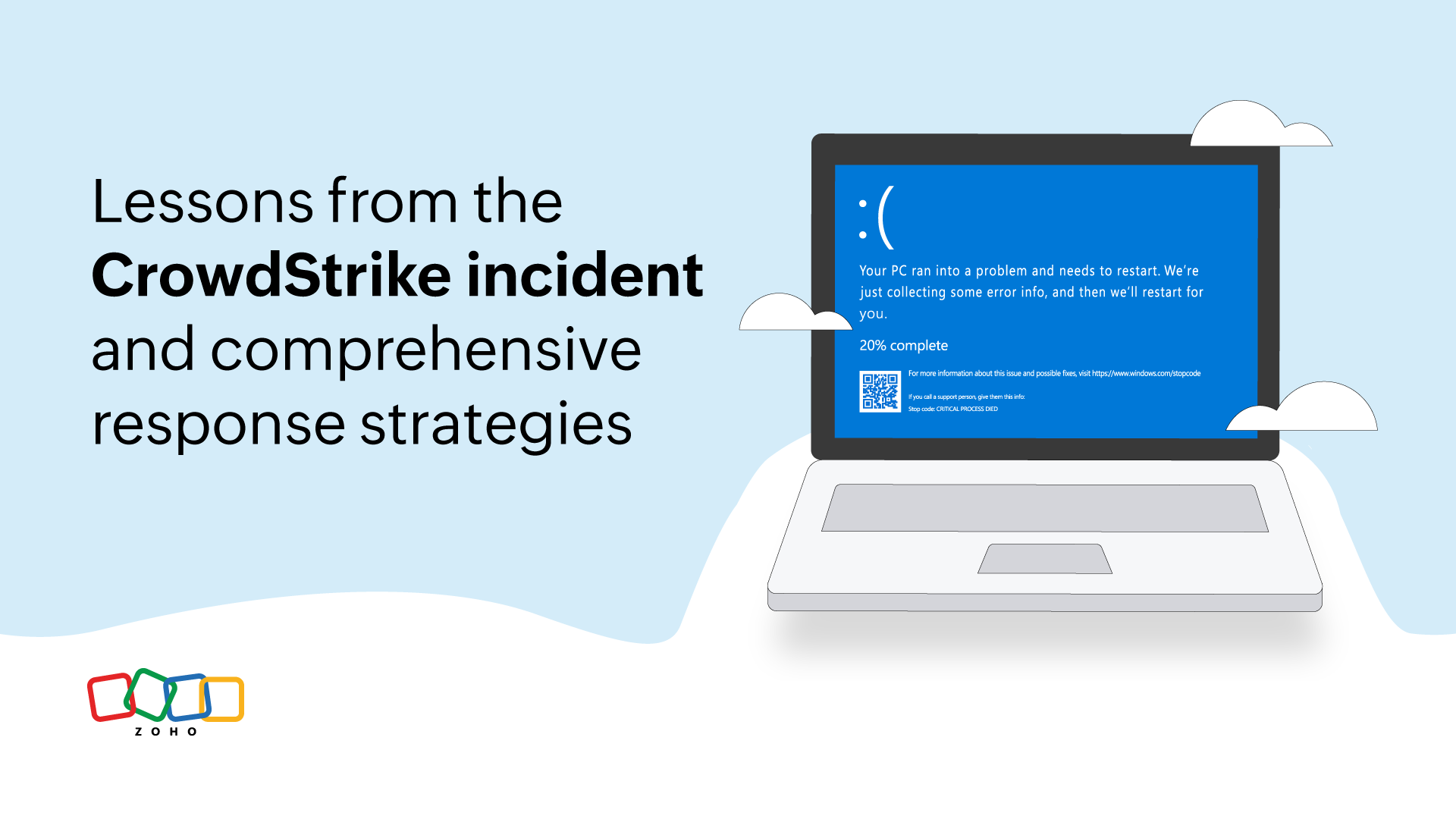- HOME
- All Products
- Best email practices for “treats,” not “tricks”
Best email practices for “treats,” not “tricks”
- Published : October 31, 2023
- Last Updated : December 14, 2023
- 2.8K Views
- 4 Min Read
You're about to read the account of a tragedy that befell an unsuspecting victim named Jack. What started as a cozy afternoon email session in a local café turned into a cyber nightmare, where Jack lost almost everything he’d worked for in his life.
The events of that day prompted him to take stern measures to make sure that his emails stayed secure from prying hackers looking for any opportunity to pounce.
A scary story at the local café
It was a lovely springtime afternoon, sunny and warm with a slight breeze. Jack sipped his coffee at the local cafe while typing away on his laptop. He had a positive outlook that day and felt completely productive as he crushed the unsurmountable mountain of emails with relative ease, fueled by caffeine.

Unbeknownst to him, there was a poltergeist lurking in the shadows. The cafe wifi he was connected to was actually a fake wifi set up by a hacker. This gave the sinister hacker access to all of the valuable data that Jack held dear: passwords, banking details, vital client information, and more were pitchforked by the hacker.
The fallout after being tricked
Jack hustled long and hard to rally clients for his freelancing business. But in just a split-second, he lost everything he had worked for up to that day because he didn't see the cobweb of fake wifi that the hacker had spun.
After the hacker was done rummaging through his files and stealing valuable data, Jack’s laptop was rendered unusable. All of Jack’s data was then wiped clean by the hacker, never to be recovered.
The treat of email best practices
Love it or hate it, there’s no denying that emails are tightly intertwined with our daily lives. From sending text messages to sending important documents and files, emails play a significant role in today's era of digital communication.
To make sure that your email is safe and secure from hackers, there are some practices that you should follow. Keep reading for five tips to prevent you from getting tricked by making your email experience a treat.
1. Avoid using public wifi.
Jack found out the hard way, but it doesn't have to be like that for you. Always avoid accessing your sensitive data on public wifi networks. You never know if it’s a genuine network from the cafe you’re working from or a malicious wifi network in disguise.
Connecting to a fake network will give the hacker access to your device, and just like that, they’ll be able to extract your personal and sensitive information without your knowledge.
2. Always use strong passwords.
This one sounds too obvious and trivial to be even listed here but, surprisingly, many people fail this hurdle. Let's face it, a password like yourname@123 is easier to remember than a strong password like xpIbNmOxeY#$qD. But the latter is less likely to be compromised since the first one is easy to guess.
Try to create or generate passwords using tools like Zoho Vault with long passphrases that are hard for hackers to break down and decrypt. These tools also make sure to remember those ominously complex passwords. This will also make sure that it doesn't get leaked in case of a brute-force attack.
3. Be mindful of email attachments.
Emails come with the added convenience of being able to share attachments. But attachments also pose an equal amount of spookiness when it comes to email security. Attachments from wicked parties can contain malware or Trojan viruses. These can allow hackers to possess your system, give extensive access to extract sensitive information from your device, and more devious tricks.
Whenever you get an email with an attachment, it’s always prudent to verify the sender to ensure it's from a trusted source. You can also gauge the authenticity of the attachment by checking the attachment file type. Avoid opening attachments that end with .exe because they initiate an installation process that can install dreadful applications on your system.
4. Make use of multi-factor authentication (MFA).
Multi-factor authentication is an effective security practice that validates the credibility of the person logging in. This is done by asking them to provide additional information, which is usually a code sent to their phone number or a biometric confirmation.
Always enable MFA for your email accounts because it can be your wizard, reducing the number of account compromise attacks by 99.9%, so no one else can masquerade in your account.
5. Refrain from opening suspicious links.
Whenever you get a link from an unknown sender, you must resist the immediate urge to click on it. It might be a cyber ogre sending you that email with the sole intention of inflicting harm. Before clicking on that link, you can hover over it to check the domain. If the domain name has misspellings or unusual letter and number combinations, the chances of it being malicious are high.
If you’re unsure whether the link is a security threat or not, you can always get in touch with your IT department to act as a genie and sort it out—it’s better than taking a chance and decapitating your email account.
The final word
Whether you believe in ghosts and ghouls or not, you must believe in the very scary cyber attackers looking to break into your email account. These business email compromise attacks usually result in ghastly consequences for the unwary victim.
The onus is on everyone to fortify their email security by following good email practices. If you think of good email practices as hocus-pocus, you might lose focus and in a cyber landscape, that’s all it takes for your account to be compromised.
Have a safe email experience with these email practices by locking your door and turning off the porch light to these savvy tricksters.
 Rohan
RohanRohan Samuel is a product marketer for Zoho Workplace who talks about workplace security, productivity, and collaboration. He is a highly enthusiastic writer who delights in evoking visual imagination with words. He also enjoys playing football with his buddies and traveling to new places.










